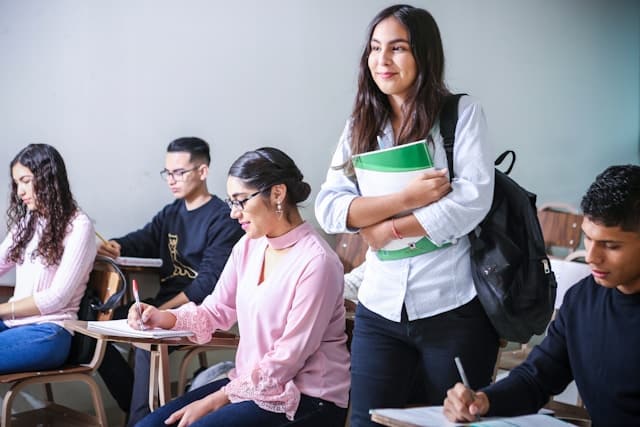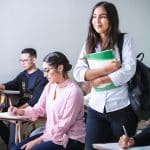The landscape of education is in continuous evolution. In this digital age, technology consistently offers new ways to enhance learning experiences. Augmented reality (AR) is one such technology that is making waves across various sectors, including education. Augmented reality in education creates an immersive learning environment, which can significantly influence student engagement and knowledge retention. This article explores the use of augmented reality in education and how this emerging technology is reshaping the educational landscape.
Augmented Reality: A Brief Overview
Before delving into how AR impacts education, it is crucial to understand what exactly augmented reality is. Augmented reality is an innovative technology that overlays digital information, such as images, videos, sounds on the real world. This union of the digital and physical worlds enhances the user’s perception of reality, providing an immersive experience.
A lire en complément : What Are the Health Benefits of Periodic Participation in Silent Retreats?
In educational context, AR applications can transform a standard textbook into a vibrant, interactive experience, allowing students to visualize complex concepts in a more tangible way. Unlike traditional teaching methods, AR-based learning provides a more engaging and practical approach to education.
Application of Augmented Reality in Education
The use of augmented reality in education goes beyond just a novelty. It is an effective learning tool that has a wide array of applications. For instance, in a science class, students can use AR to take a virtual tour of the solar system, or in a history class, they can witness significant historical events in 3D.
En parallèle : Can In-Home Physical Therapy via Telehealth Improve Outcomes for Post-Operative Knee Surgery?
Furthermore, AR can significantly enhance learning experiences for students with special needs. For example, students with autism can use AR tools to better understand social cues and emotions. Similarly, AR can help visually impaired students to experience and understand concepts which would otherwise be difficult for them to grasp.
In addition, AR makes remote learning more interactive and engaging. This became particularly useful during the COVID-19 pandemic when traditional classrooms shifted online. AR bridged the gap between the physical and digital world, offering students a more immersive remote learning experience.
Impact on Student Engagement
One of the main benefits of using augmented reality in education is the increase in student engagement. Traditional teaching methods often struggle to maintain students’ attention. However, AR transforms learning into an interactive and enjoyable experience which naturally captures students’ interest.
As students interact with the digital elements overlaying the real world, they become active participants in their learning process. This active involvement enhances their understanding of the subject matter and makes the learning experience more memorable. Moreover, AR encourages curiosity and exploration, fostering a love for learning among students.
Boosting Knowledge Retention
Beyond engagement, augmented reality in education can significantly improve knowledge retention. When students are fully immersed in the learning experience, they are more likely to remember what they learned. The multidimensional aspect of AR-based learning caters to different learning styles, increasing the chances of information retention.
For instance, visual learners benefit from the graphical representations, while kinesthetic learners benefit from the interactive nature of AR. This personalized learning approach enhances students’ comprehension and recall of the study material.
Future Prospects of AR in Education
With its positive impact on student engagement and knowledge retention, augmented reality offers promising prospects in the field of education. The future of AR in education could see a more personalized and adaptive learning experience for students.
In the future, AI-powered AR could adapt to individual learning styles and pace, delivering personalized content to each student. Such adaptive learning could maximize the effectiveness of teaching, creating a more inclusive educational environment.
While the use of augmented reality in education is still in its nascent stages, its potential to revolutionize the learning experience is evident. As AR technology continues to evolve and become more accessible, its adoption in education is expected to increase, offering students a more engaging and effective learning experience. However, it is important to strike a balance between technology and traditional teaching methods to ensure that students receive a well-rounded education.
Augmented Reality and Academic Performance
Augmented reality is not just a tool for creating immersive and engaging learning experiences but it also significantly impacts students’ academic performance. Leveraging AR in education has shown positive results in students’ achievement levels and post-test scores, as numerous studies cited on Google Scholar indicate.
For instance, a study might involve a control group and an experimental group where the latter is exposed to AR-based learning. Pre-test and post-test results often reveal that the experimental group, exposed to the AR-based learning, outperforms the control group. This indicates the AR’s potential in boosting academic performance.
Moreover, AR promotes experiential learning, allowing students to explore, apply and actively participate in the learning process. This hands-on approach provides a deeper understanding of the subject matter, which subsequently, results in improved academic performance.
AR-based applications also support distance education. Especially in the current scenario, where remote learning has become a necessity, AR provides an effective solution to keep the learning process engaging and effective. For example, students can take a virtual field trip to a historical site or a science lab, making distance education as enriching as traditional classroom-based learning.
In conclusion, augmented reality serves as a powerful tool to enhance not just student engagement but also their academic performance.
Conclusion: Balancing Augmented Reality and Traditional Teaching
While augmented reality has proven to be a game-changer in the educational landscape, it is essential to maintain a balanced approach. Technology, no matter how advanced, cannot serve as a complete substitute for traditional teaching.
Traditional teaching methods are tried and tested, forming the backbone of the education system for centuries. They have their own strengths – fostering a sense of community, promoting student-teacher interaction, and reinforcing discipline. Therefore, it is crucial to remember that augmented reality should not entirely replace these methods but supplement them.
Integrating AR technology with traditional teaching methods could offer a comprehensive learning experience. For instance, a teacher might explain a concept first, then use AR to visualize the concept. This blend of instruction and immersive learning can enhance students’ understanding and retention of the material.
Moreover, while augmented reality is a fascinating tool, it is necessary to ensure it is used responsibly. Inappropriate use of AR could lead to distractions and privacy concerns. Therefore, establishing guidelines for ethical and responsible use of AR in education is imperative.
In the future, the use of AR is likely to become more prevalent. As this reality technology continues to evolve, the potential for innovative learning experiences grows. The exciting blend of the virtual and real world, powered by AR, is set to transform the face of education. So, the key is to harmoniously blend the new with the old, leveraging the strengths of both traditional teaching methods and innovative AR-based learning, to offer a well-rounded, engaging, and effective education.











